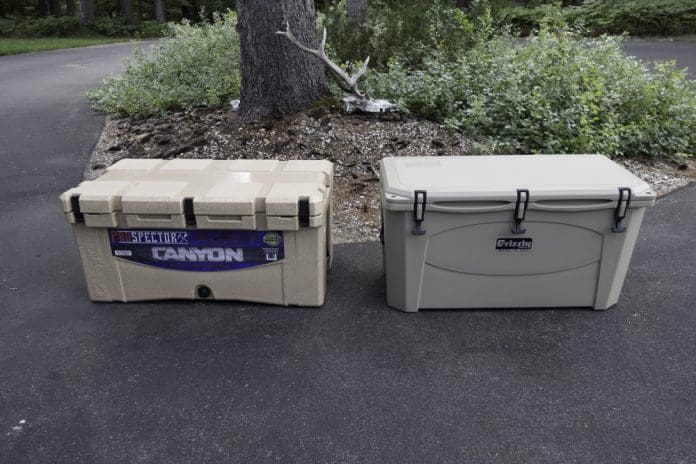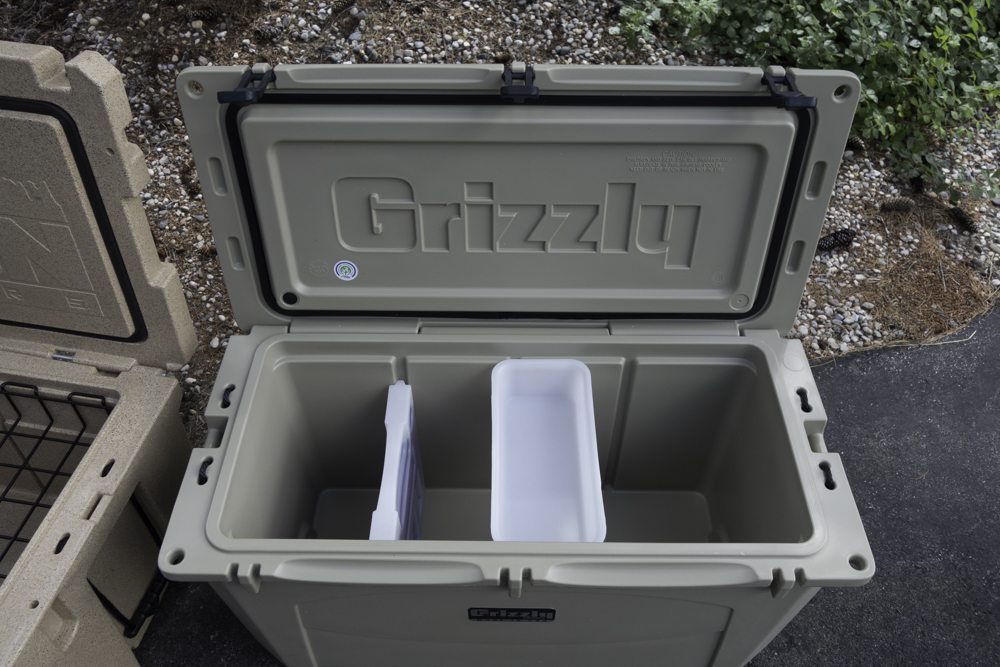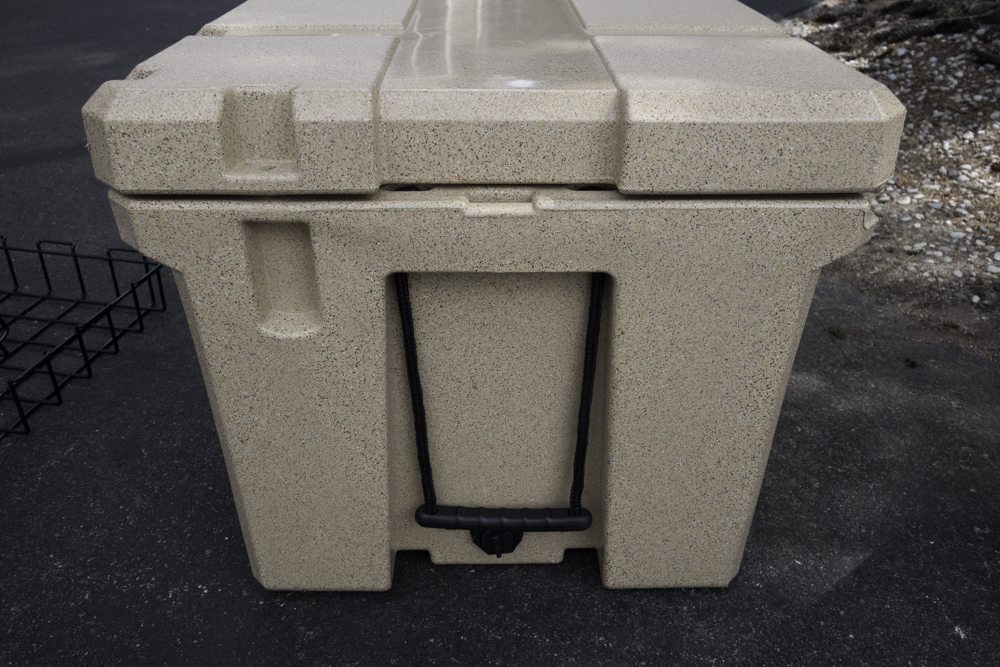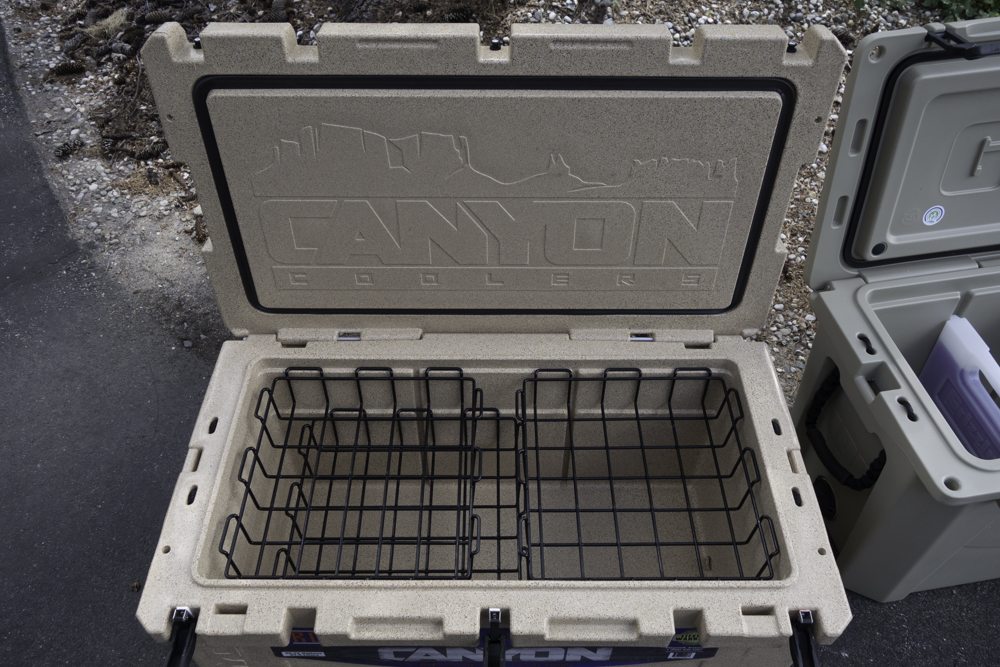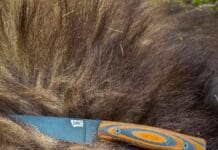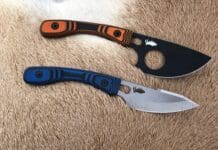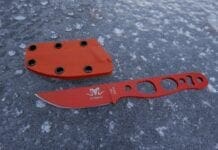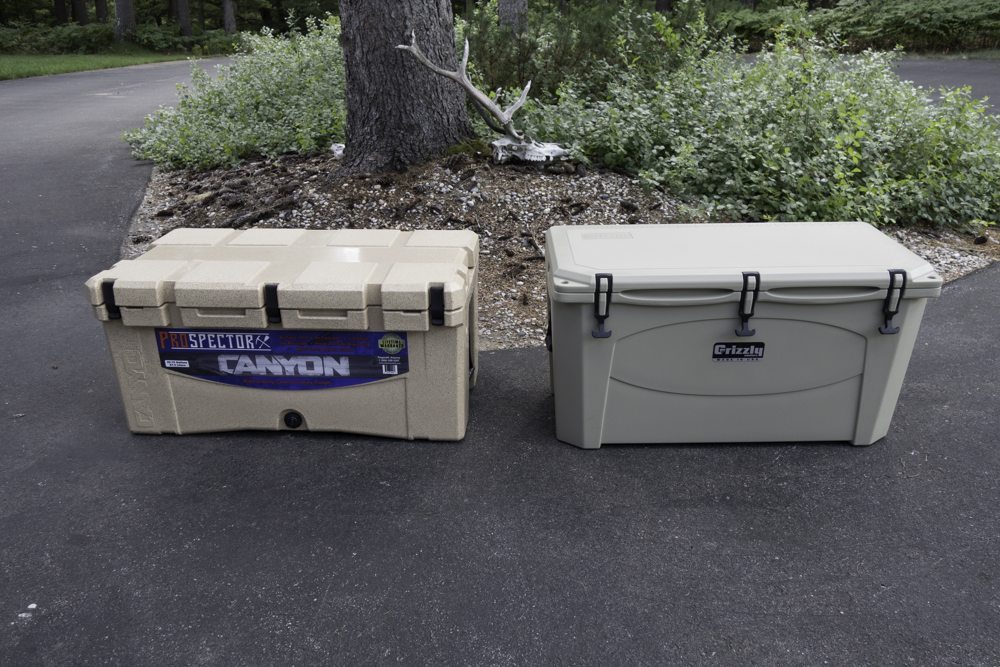 Review: Cross Country Cooler Road Trip
Review: Cross Country Cooler Road Trip
by Tony Trietch, Rokslide Moderator
There has been a growing debate lately regarding the quality, high-end coolers versus the cheap throw-away coolers. That discussion essentially breaks down to value. Is a single higher priced quality cooler that will last years (and perhaps a lifetime) better than buying multiple cheap coolers that will inevitably break down and need to be replaced? I had no set-in-stone opinion as I had always made due with the cheap variety but thought the higher quality coolers would probably do a better, more efficient job. I came up with a way to find out for myself and maybe help others that have not had the chance to use the modern Roto Molded coolers.
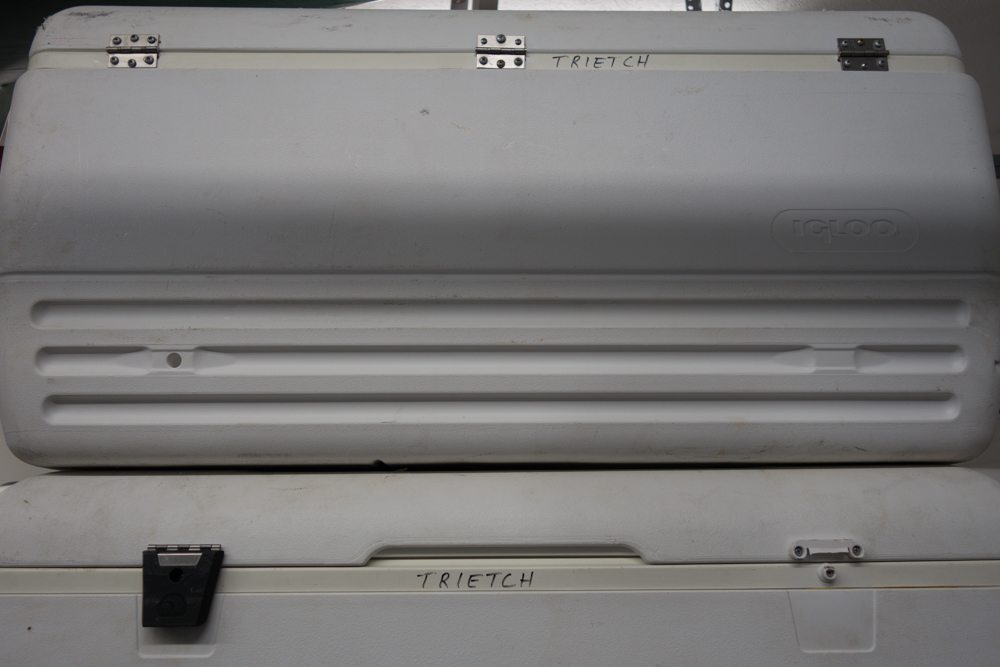 Broken hinges and latches were the norm using the cheap coolers
Broken hinges and latches were the norm using the cheap coolers
My plan was to replace my cheap throw-away coolers with a couple of today’s best high-end coolers and then use them for my fall 2016 hunts—totaling almost 11 weeks on the road. This would not be a scientific ice melt analysis, simply a comparison of real life abuse by an outdoorsman that has high expectations for all his gear.
If you are looking for ice melt tests and a thorough breakdown of today’s quality coolers, Rokslide’s own Travis Bertrand has two separate articles that could prove valuable for you:
The Really Big Cooler Shoot Out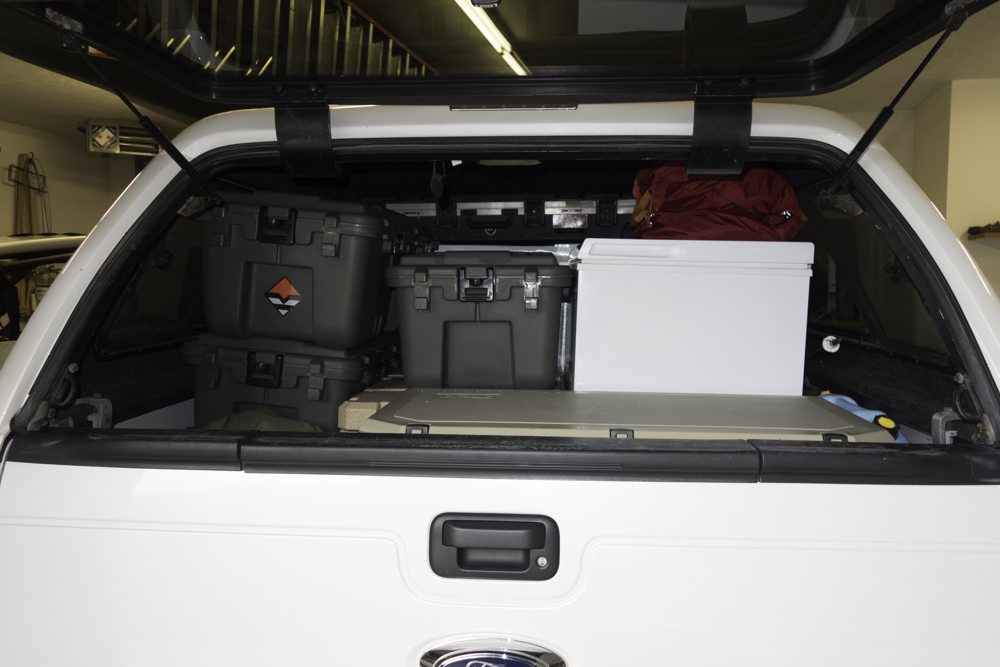 The truck loaded down and ready to hit the road
The truck loaded down and ready to hit the road
Living in the Midwest and hunting the Western mountains every year provides me with ever changing logistics challenges. 2016 was no different; I had drawn elk and deer in three different states. Of course, the different states seasons didn’t line up perfectly and in the end, I would leave home the first week of August and not get home until the first week of October. The coolers would be in the back of my truck or at a base camp with me for the entire time.
I choose Grizzly and Canyon Coolers for my trip, both in 100 qt. size. Both companies have great reputations for quality and craftsmanship in their products as well as their customer service. I choose the larger, 100 qt. size because of the number of tags I had to fill and I usually use very large coolers for my hunt trips. These larger coolers are not the easiest to move around when filled up but they swallow up a lot of meat and I need that on my long trips. I would not need to move them once they were filled up and sealed in the truck. At that point the cooler had to do its job.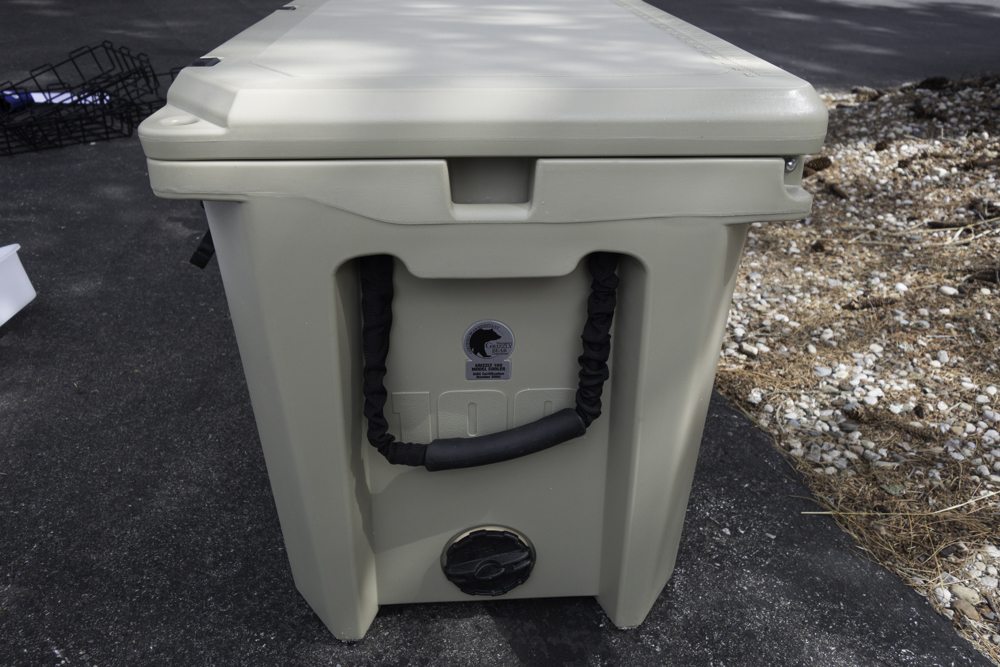
I planned to leave home with both coolers full of frozen jugs of drinking water to be used during my hunts. I would also be bringing a small cheap chest freezer. If I was to punch one of my early tags in August or the beginning of September, I would need to get the meat frozen and back in the coolers to keep for the duration of the trip.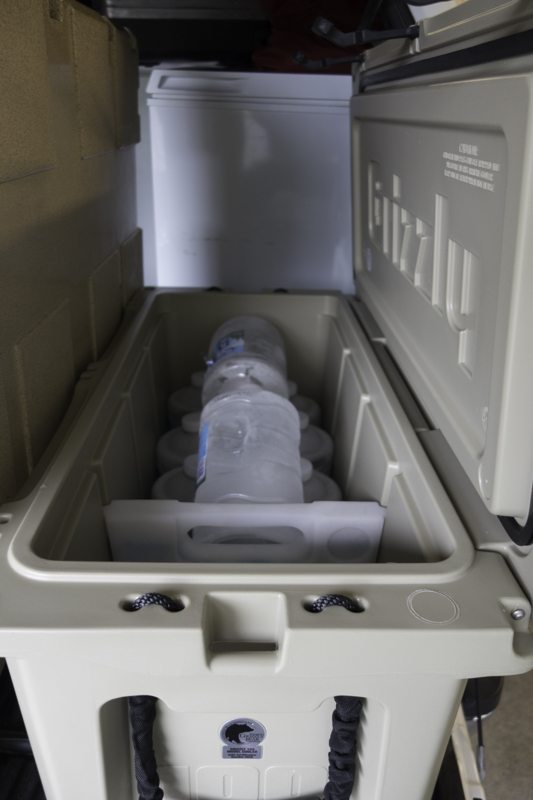
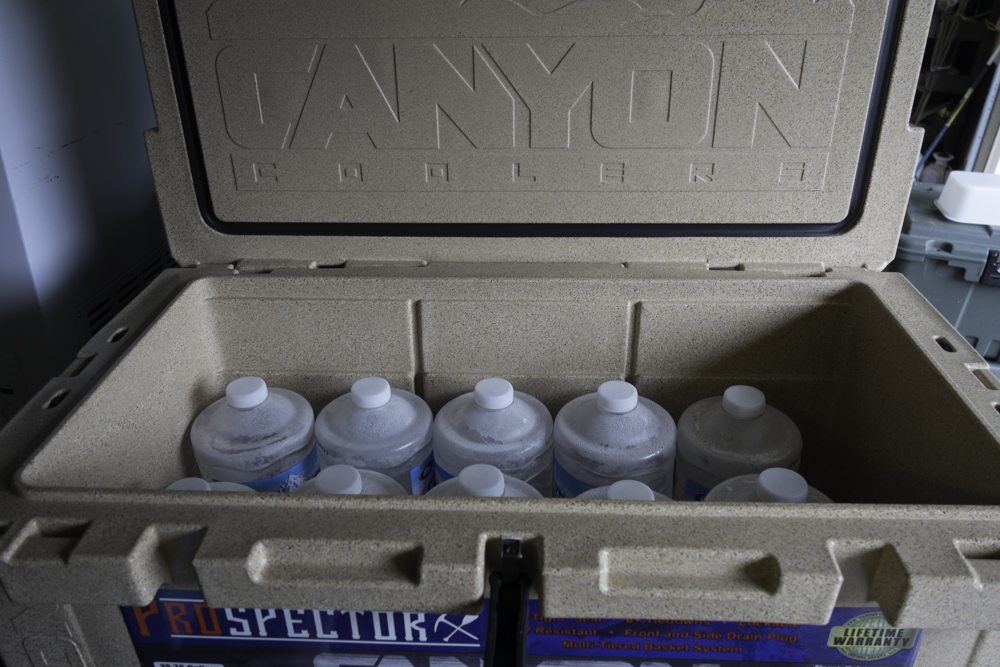
I would go from my home state of Michigan to Arizona to hunt deer, then to Wyoming for elk and mule deer, then back to Arizona for elk, then back to Wyoming for elk and deer, then finally Montana for elk and deer. No big deal, just 10K+ miles on the truck and a lot of wear and tear on all my gear, including the coolers. The Arizona elk hunt in particular proved to be very rough on all of my gear. I learned not to take a ¾ ton truck down boulder-filled jeep trails the hard way, getting myself in situations where options were limited and I had to push the limits of the truck just to get out. My truck saw $5k worth of body damage and many items in the back of the truck got tossed around and broke. The coolers however only had scratches.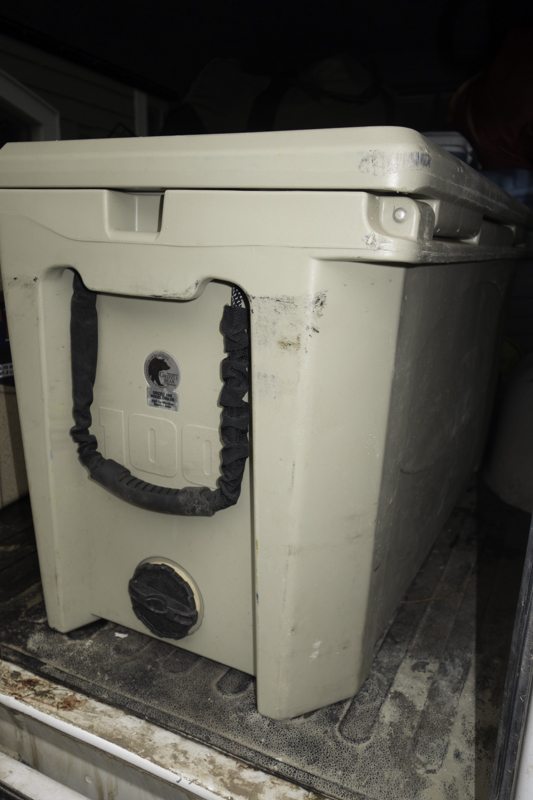
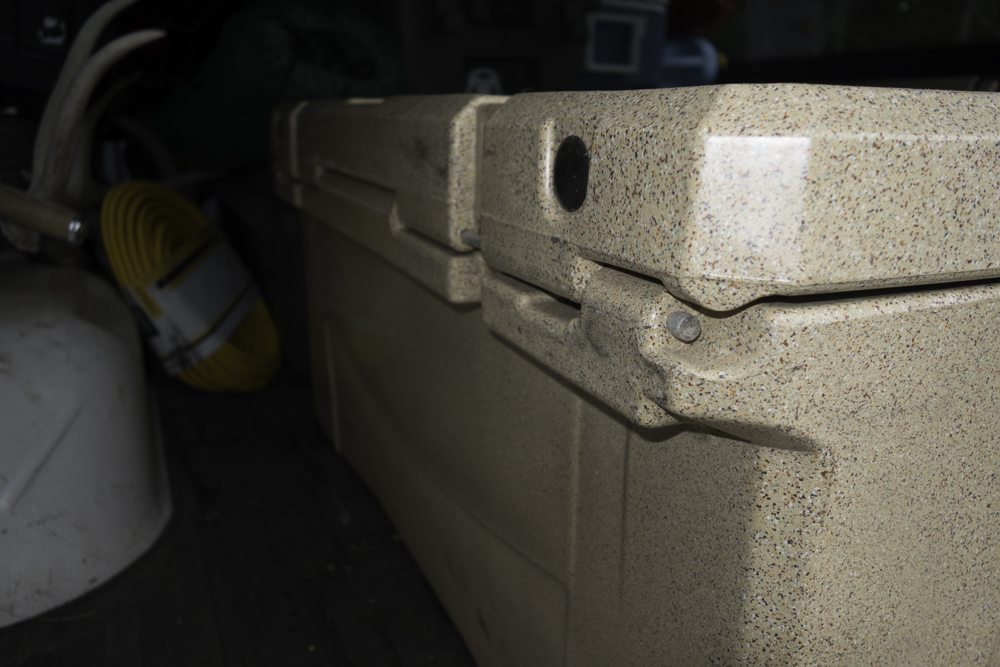
The Arizona hunts would be base camp type hunts that allowed me to occasionally throw a bag of ice from a gas station over top of my previously frozen water jugs. The coolers saw triple digit heat during portions of these hunts and yet both still had ice remaining in my frozen water jugs for weeks. Surely the same results would be tough without a bag of ice being added every 4-5 days but this was WAY beyond anything I had experienced with cheap coolers.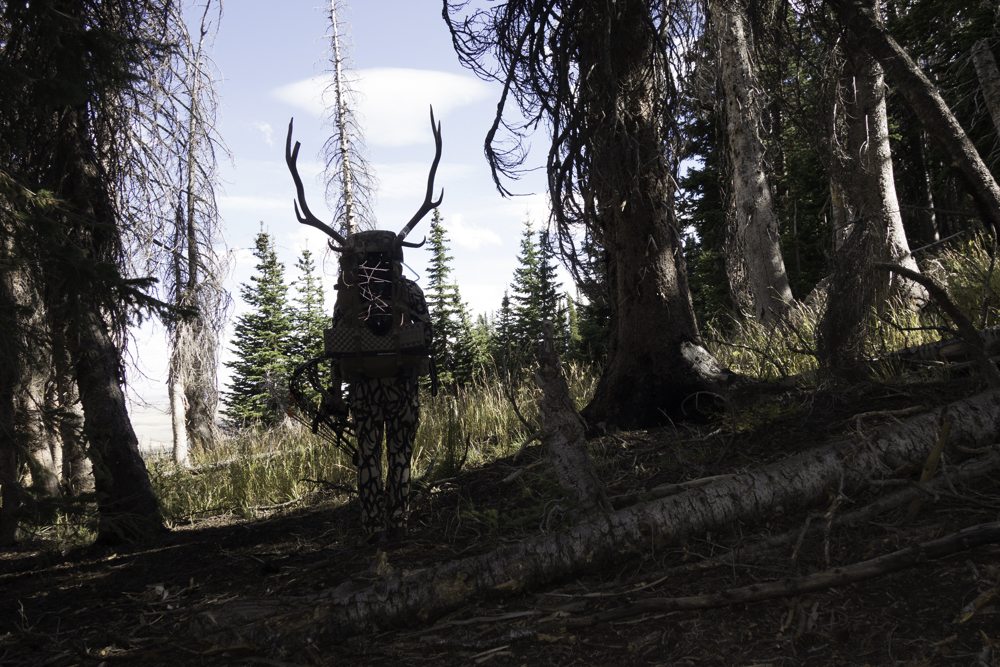 Wyoming providing the first candidate to ride home in the new coolers
Wyoming providing the first candidate to ride home in the new coolers
When I tagged my first animal on the Wyoming elk hunt in the first week of September, I took it and the chest freezer to a friend’s barn in Wyoming. There it would stay until I got back from my second trip to Arizona. Despite passing 15+ bulls that were bigger than my Wyoming bull from the previous week, my second Arizona tag for 2016 went un-punched; high self-imposed expectations can sometimes be more bitter than sweet.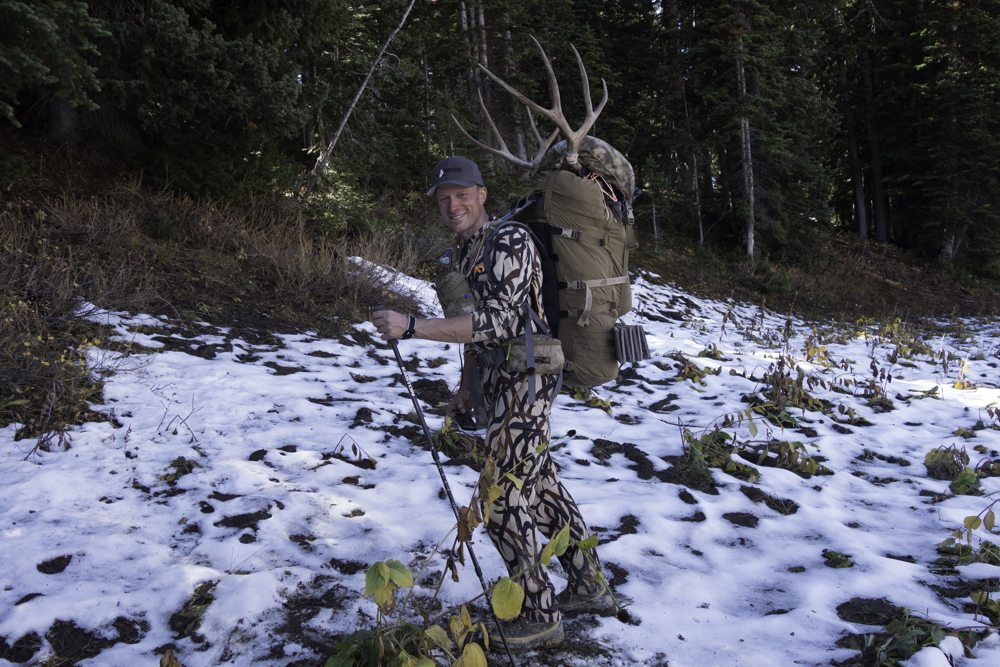 Wyoming buck killed on the second trip into the back country
Wyoming buck killed on the second trip into the back country
The Wyoming deer went much smoother and I was able to get my buck and put more meat in the coolers. Now with a frozen elk and a fresh deer equally split in the coolers, I was off to Montana for the last of my hunts. This would be the real test of cold retention for me. I would be over an hour drive from anywhere with ice. If the coolers started to melt too fast, I would have to burn a partial day running to town to replenish ice. I put them in the shade of a tarp under a pine at base camp and did not open them. I focused on hunting and trusted the coolers.
It was two weeks later that I filled my Montana elk tag and was packing up base camp. Both coolers had kept the frozen elk and thawed deer marvelously. In fact the elk was still very much frozen and the deer had started to freeze just from the cold of the elk. A storm had hit and the temps were dropping. I added the boned out meat from the second elk and pointed the truck east. Two elk and a deer was a bit more than the two coolers could hold and still get the lids sealed shut but with the colder temps and two days to get home, I was in the clear.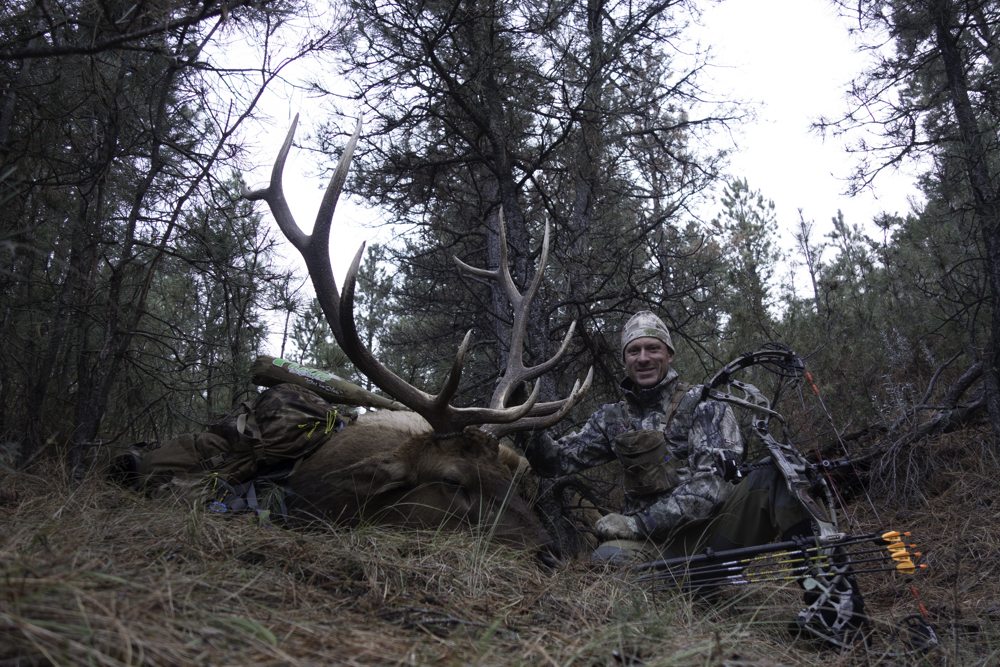
The 1300 miles home went fast and all the meat made it home safe. There was a moment while unpacking the coolers that I realized that not only did they far surpass anything I had ever gotten out of the cheap coolers but this added precious days to my hunting time. No more running to town for ice or wondering if my hard-earned protein was staying cold enough. I was able to just focus on hunting. I think that was worth price of the high end coolers. Best part is both of them are in perfect working order and ready for the next road trip. No more broken handles or latches. No more stripped-out hinges, warped lids and cracked side walls. I had never put any of my old throw-away coolers through what I subjected the the Canyon and Grizzly too. I’m not sure the cheap coolers would have made it past the third leg of the hunt in Arizona.
Looking for a winner between the two? That would be tough, as both performed exactly as I wanted and were tough as nails. The following is a list my favorite qualities of each but regardless of which one you choose, it will be far superior to any cheap throw-away cooler you’ve had. In my opinion, these high-quality coolers are well worth every penny.
What I liked about the Grizzly:
• Taller and narrower, it took less floor space in the truck bed.
• Huge drain plugs! Watch your feet, liquid comes out fast!
• Simple pull-down latches worked easily one-handed.
• Rubber feet grip very well.
• Lifetime Warranty!
What I liked about the Canyon:
• Hard shell exterior proved more durable and scratched much less than the Grizzly.
• Drain plugs are attached and can’t get lost.
• Side and end drain plug.
• The shelving system works very well.
Lifetime Warranty!
You can ask Tony questions or discuss this article here














